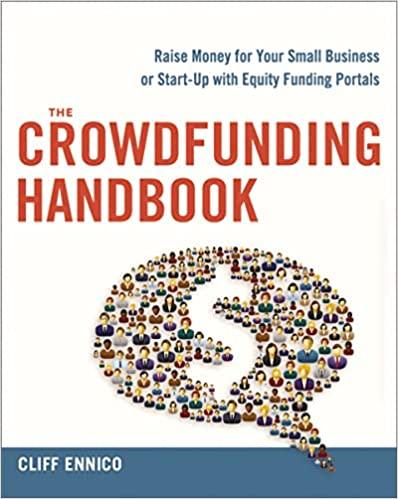Question
1. Consider the following two mutually exclusive projects: Year Cash Flow (A) Cash Flow (B) 0 $365,000 $40,000 1 38,000 20,300 2 47,000 15,200 3
| 1. Consider the following two mutually exclusive projects: |
| Year | Cash Flow (A) | Cash Flow (B) |
| 0 | $365,000 | $40,000 |
| 1 | 38,000 | 20,300 |
| 2 | 47,000 | 15,200 |
| 3 | 62,000 | 14,100 |
| 4 | 455,000 | 11,200 |
| The required return on these investments is 13 percent. |
| Required: | |
| (a) | What is the payback period for each project? (Do not round intermediate calculations. Round your answers to 2 decimal places (e.g., 32.16).) |
| Payback period | |
| Project A | years |
| Project B | years |
| (b) | What is the NPV for each project? (Do not round intermediate calculations. Round your answers to 2 decimal places (e.g.,32.16).) |
| Net present value | |
| Project A | $ |
| Project B | $ |
| (c) | What is the IRR for each project? (Do not round intermediate calculations. Enter your answer as a percentage rounded to 2 decimal places (e.g., 32.16).) |
| Internal rate of return | |
| Project A | % |
| Project B | % |
| (d) | What is the profitability index for each project? (Do not round intermediate calculations. Round your answers to 3 decimal places (e.g., 32.161).) |
| Profitability index | |
| Project A | |
| Project B | |
| (e) | Based on your answers in (a) through (d), which project will you finally choose? |
| (Click to select)Project AProject B |
1. Bond X is a premium bond making annual payments. The bond has a coupon rate of 9 percent, a YTM of 7 percent, and has 13 years to maturity. Bond Y is a discount bond making annual payments. This bond has a coupon rate of 7 percent, a YTM of 9 percent, and also has 13 years to maturity. Assume the interest rates remain unchanged.
| Requirement 1: |
| What are the prices of these bonds today? (Do not round intermediate calculations. Round your answers to 2 decimal places (e.g., 32.16).) |
| Prices | ||||
| Bond X | $ | |||
| Bond Y | $ | |||
| Requirement 2: |
| What do you expect the prices of these bonds to be in one year? (Do not round intermediate calculations. Round your answers to 2 decimal places (e.g., 32.16).) |
| Prices | ||||
| Bond X | $ | |||
| Bond Y | $ | |||
| Requirement 3: |
| What do you expect the prices of these bonds to be in three years? (Do not round intermediate calculations. Round your answers to 2 decimal places (e.g., 32.16).) |
| Prices | ||||
| Bond X | $ | |||
| Bond Y | $ | |||
| Requirement 4: |
| What do you expect the prices of these bonds to be in eight years? (Do not round intermediate calculations. Round your answers to 2 decimal places (e.g., 32.16).) |
| Prices | ||||
| Bond X | $ | |||
| Bond Y | $ | |||
| Requirement 5: |
| What do you expect the prices of these bonds to be in 12 years? (Do not round intermediate calculations. Round your answers to 2 decimal places (e.g., 32.16).) |
| Prices | ||||
| Bond X | $ | |||
| Bond Y | $ | |||
| Requirement 6: |
| What do you expect the prices of these bonds to be in 13 years? (Do not round intermediate calculations. Round your answers to 2 decimal places (e.g., 32.16).) |
| Prices | |
| Bond X | $ |
| Bond Y | $ |
1. Say you own an asset that had a total return last year of 15 percent. Assume the inflation rate last year was 2.5 percent.
| Required: |
| What was your real return? (Do not round intermediate calculations. Round your answer to 2 decimal places (e.g., 32.16).) |
| Real return | % | |
Step by Step Solution
There are 3 Steps involved in it
Step: 1

Get Instant Access to Expert-Tailored Solutions
See step-by-step solutions with expert insights and AI powered tools for academic success
Step: 2

Step: 3

Ace Your Homework with AI
Get the answers you need in no time with our AI-driven, step-by-step assistance
Get Started


